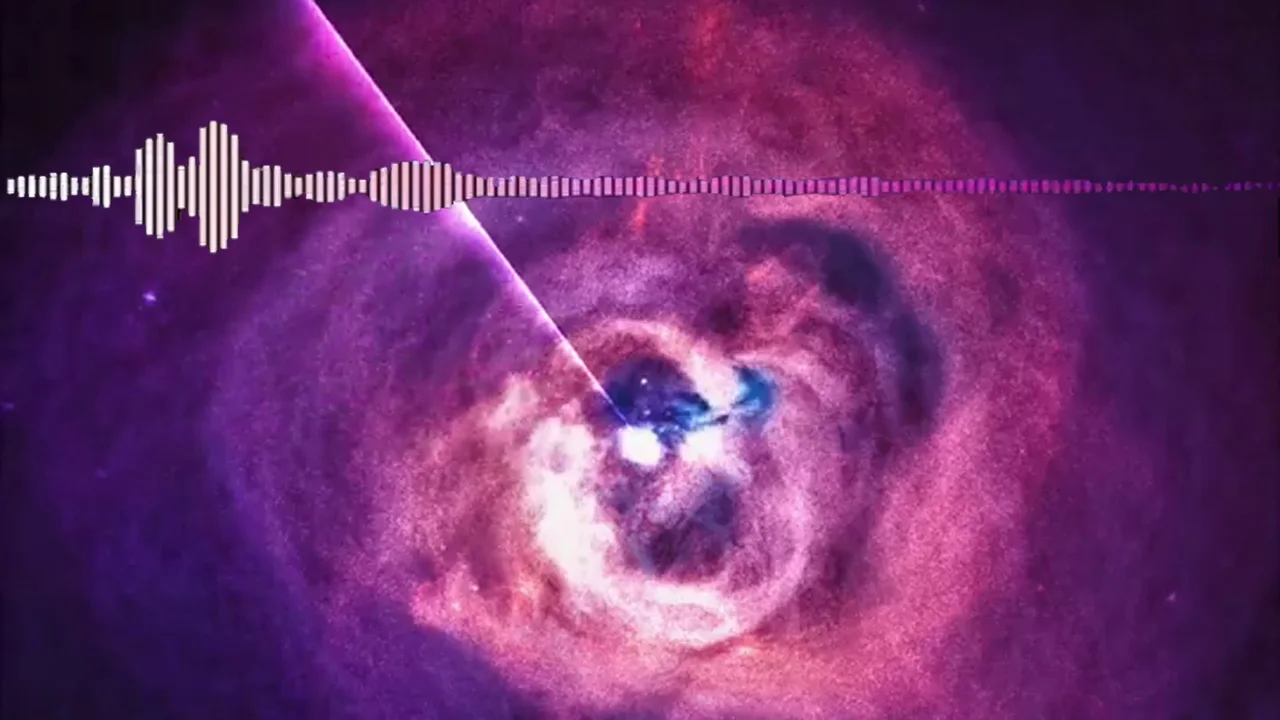
Black holes play eerie music in these NASA 'sonifications'
Celebrate Black Hole Week with these mind-bending 'songs' from the universe.
If the supermassive black hole at the core of one of the largest galaxy clusters in the universe sets off pressure waves through the gases surrounding it, which form ripples in those gases that our telescopes can see... but nobody is there to hear it, does it make a sound?
If you process the data you gathered with your telescope just right, it certainly does!
For Black Hole Week, NASA scientists presented two videos showcasing sonification — the translation of data about astronomical objects into sound. Of course, we've seen this before, such as when satellites captured the eerie magnetic 'song' that Earth sings during a solar storm.
When astronomers point their telescopes at distant objects in the cosmos, they gather light that may have been travelling through space for billions of years. From that light, they produce images that can tell us plenty about these objects. In addition, however, exploring the data using our other senses can reveal new things about what we are seeing. It can also just be a lot of fun.
Watch below: A supermassive black hole plays an eerie dirge to the universe
The example above is a sonification featuring the supermassive black hole at the core of the Perseus Galaxy Cluster. Using NASA's Chandra X-ray Telescope, astronomers noticed pressure waves emanating from the black hole were causing ripples in the hot gases surrounding it. They then translated those ripples into musical notes. The notes are so delicate and faint that if they were played as-is, we would never be able to hear them (NASA says they would be 57 octaves below middle C). However, by scaling them upwards, the scientists made the notes audible.
Additionally, they provided a solid answer to the question posed at the top of this article. Technically, this black hole is producing sounds!
According to NASA: "The popular misconception that there is no sound in space originates with the fact that most of space is essentially a vacuum, providing no medium for sound waves to propagate through. A galaxy cluster, on the other hand, has copious amounts of gas that envelop the hundreds or even thousands of galaxies within it, providing a medium for the sound waves to travel."
Not all astronomical sonifications are as eerie and sad as what we're hearing from the Perseus Cluster, though.
Remember the supermassive black hole at the centre of galaxy Messier 87? It was the subject of the very first real image of a black hole, released back in 2019. For years, astronomers have been imaging an immense jet of high-energy matter being emitted from M87. It stretches to around 5,000 light years away from the black hole, showing up at multiple wavelengths of light.
Taking data from the Hubble Space Telescope, the Chandra X-ray Telescope, and the Atacama Large Millimeter Array in Chile, scientists combined it all to produce a haunting melody.
Watch below: A string of high-energy matter plays beautiful music
As NASA said: "The brightest region on the left of the image is where the black hole is found, and the structure to the upper right is a jet produced by the black hole. The jet is produced by material falling onto the black hole. The sonification scans across the three-tiered image from left to right, with each wavelength mapped to a different range of audible tones. Radio waves are mapped to the lowest tones, optical data to medium tones, and X-rays detected by Chandra to the highest tones. The brightest part of the image corresponds to the loudest portion of the sonification, which is where astronomers find the 6.5-billion solar mass black hole that EHT imaged."











